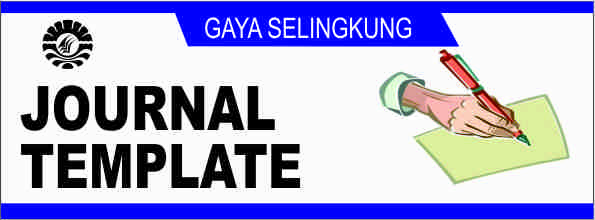The Effectiveness of the Use of Academic Information Systems
(1) STISIP 17-8-1945 Makassar
(2) Universitas Negeri Makassar
(3) Universitas Negeri Makassar
(4) Universitas Negeri Makassar
(*) Corresponding Author
DOI: https://doi.org/10.26858/jo.v7i2.42939
Abstract
Use information technology is used as a means that can facilitate a person or an agency in carrying out their work effectively and efficiently. This research is a qualitative descriptive study that aims to determine how effective the use of academic information systems is in the Office Administration Education Study Program, Faculty of Social Sciences, Universitas Negeri Makassar. The informants of this research are all parties who are directly involved in the use of academic information systems, namely students, study program operators, lecturers, and SIA managers at the UNM ICT Center. Data collection techniques used are observation, interviews, and documentation. The results of data analysis are presented in the form of a description that describes the procedures, constraints, and solutions in the use of the Academic Information System. The results showed that the effectiveness of the use of academic information systems in the Office Administration Education Study Program, Faculty of Social Sciences, Universitas Negeri Makassarwas classified as quite effective in terms of information quality indicators, namely accurate, timely, and relevant.
Full Text:
PDFReferences
Albina, A. C., & Sumagaysay, L. P. (2020). Employability tracer study of Information Technology Education graduates from a state university in the Philippines. Social Sciences & Humanities Open, 2(1), 100055. https://doi.org/https://doi.org/10.1016/j.ssaho.2020.100055
Asongu, S. A., Orim, S.-M. I., & Nting, R. T. (2019). Inequality, information technology and inclusive education in sub-Saharan Africa. Technological Forecasting and Social Change, 146, 380–389. https://doi.org/https://doi.org/10.1016/j.techfore.2019.06.006
Baglieri, D., Baldi, F., & Tucci, C. L. (2018). University technology transfer office business models: One size does not fit all. Technovation, 76–77, 51–63. https://doi.org/https://doi.org/10.1016/j.technovation.2018.05.003
Feller, D. J., Lor, M., Zucker, J., Yin, M. T., Olender, S., Ferris, D. C., Elhadad, N., & Mamykina, L. (2020). An investigation of the information technology needs associated with delivering chronic disease care to large clinical populations. International Journal of Medical Informatics, 137, 104099. https://doi.org/https://doi.org/10.1016/j.ijmedinf.2020.104099
Hasyim, S., Sofyang, S., Syurkati, K. K., & Sumarni, S. (2021). Dissemination Program in Improving Information Services to the Community in Bone District. Jurnal Office, 7(2), 289–298.
Jordan, P. D. (2014). Technology as human social tradition. University of California Press.
Kotabe, M., & Mandviwalla, M. (2005). Information technology and international business: Theory and strategic development. Journal of International Management, 11(2), 119–123. https://doi.org/https://doi.org/10.1016/j.intman.2005.03.002
Makhbub Zunaidi, Dwi Eko Waluyo, D. A. (2011). Relevansi informasi terhadap kepuasan pemakai sistem informasi atemis on web di pt . Telkom msc area iv jawa tengah dan diy. (Semantik).
McElroy, J. C., Scheibe, K. P., & Morrow, P. C. (2007). Computer technology as object language: Revisiting office design. Computers in Human Behavior, 23(5), 2429–2454. https://doi.org/https://doi.org/10.1016/j.chb.2006.03.017
Niswaty, R., AMIN, M., Akib, H., & Jamaluddin, J. (2020). Records Management at PT. Bank Sulselbar Jeneponto Branch. Jurnal Office: Jurnal Pemikiran Ilmiah Dan Pendidikan Administrasi Perkantoran, 6(2), 143–152.
Radhiyani, F. (2018). Developing the Students’ Speaking Performance through Information Transfer Technique. Jurnal Ad’ministrare, 5(2), 147–164.
Rhamdani, M. A. (2018a). Sistem Informasi Manajemen (Bandung). Pustaka Setia.
Rhamdani, M. A. (2018b). Sistem Informasi Manajemen (Bandung). Pustaka Setia.
Sadowski, J. (2015). Office of Technology Assessment: History, implementation, and participatory critique. Technology in Society, 42, 9–20. https://doi.org/https://doi.org/10.1016/j.techsoc.2015.01.002
Sugiyono. (2018). Metode Penelitian Pendidikan. Alfabeta.
Syarifuddin, H. M., Tahir, H., Akib, H., & Rusdi, M. (2021). Innovation of Electronic Licensing Information System at the Office of Investment and One Stop Integrated Services (DPMPTSP) of Bone Regency. Jurnal Office, 7(1), 169–182.
Szymkowiak, A., Melović, B., Dabić, M., Jeganathan, K., & Kundi, G. S. (2021). Information technology and Gen Z: The role of teachers, the internet, and technology in the education of young people. Technology in Society, 65, 101565. https://doi.org/https://doi.org/10.1016/j.techsoc.2021.101565
Tata Sutabri. (2014). Sistem Informasi Manajemen. Penerbit Andi.
Wiesmeth, H. (2021). Chapter 11 - Technology and information (H. B. T.-I. the C. E. for S. D. Wiesmeth, Ed.; pp. 125–139). Elsevier. https://doi.org/https://doi.org/10.1016/B978-0-12-821798-6.00011-9
Article Metrics
Abstract view : 59 times | PDF view : 21 timesRefbacks
- There are currently no refbacks.
Copyright (c) 2021 2021 Nasaruddin H, Shofian Shofian, Haedar Akib, Risma Niswaty

This work is licensed under a Creative Commons Attribution 4.0 International License.






























 under a
under a